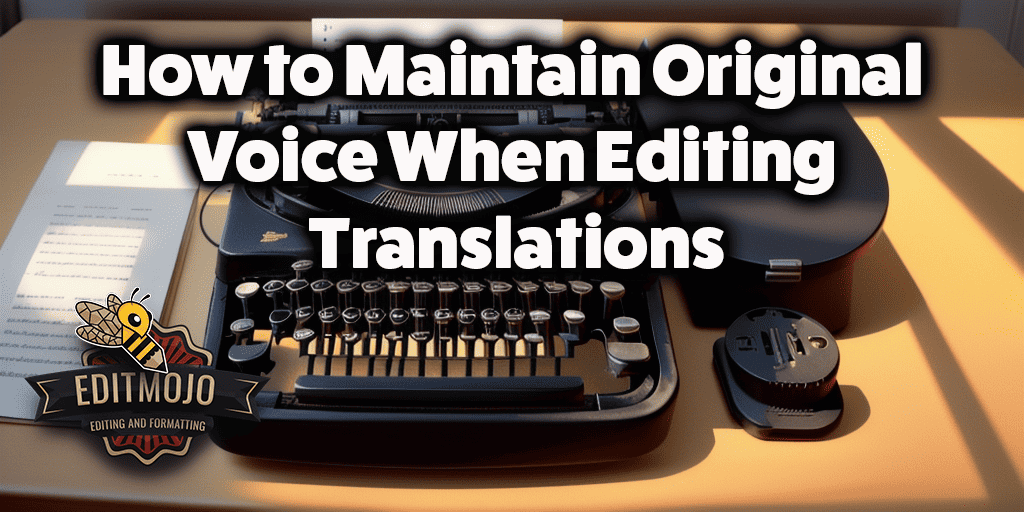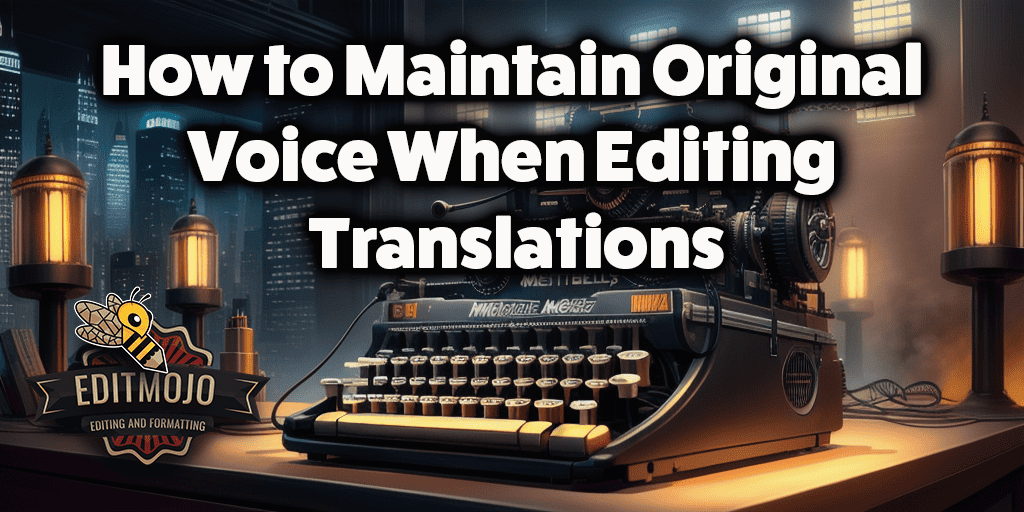How to Maintain Original Voice When Editing Translations
How to maintain original voice when editing translations. Editing translated content is a meticulous task. There’s a fine line between enhancing the readability of the text and maintaining the original voice, a tightrope that translators and editors must walk. Today, we’ll delve into the heart of the matter and reveal how to maintain original voice when editing translations.
“Translation is not a matter of words only: it is a matter of making intelligible a whole culture.” — Anthony Burgess.
Key takeaway table summarizing the strategies for maintaining the original voice when editing translations:
| Key Strategies | Description |
|---|---|
| Understand the Culture | Cultural understanding is as crucial as linguistic proficiency. It aids in capturing the original nuances and idioms of the source text. |
| Respect the Author’s Style | The author’s voice is unique and should be preserved. Respect the original style, tone, and perspective when editing translations. |
| Align Editing Approach with the Original Voice | Choose an editing approach that aligns with the author’s voice. If the original text is formal, maintain formality in the translation. |
| Prioritize Meaning over Literal Translation | The original meaning and context should always be prioritized over word-for-word translation. |
| Embrace Localization | Adapt the content to match the cultural, societal, and linguistic norms of the target audience. This will help the original voice resonate with the new readership. |
| Leverage CAT Tools | CAT tools like SDL Trados or MemoQ can help maintain consistency in tone and style, thereby preserving the original voice. |
| Collaborate with the Original Author | If possible, work with the original author during the editing process. Their insights can provide invaluable guidance in maintaining their voice. |
| Practice Reflective Editing | Reflect on the translated text’s meaning and tone, and make necessary edits to ensure the original voice is preserved. |
| Continuous Learning and Improvement | Stay updated with the latest trends and best practices in translation and editing. Continuous learning helps in skill development and improvement. |
The Challenge of Keeping the Original Voice in Translation
Before we delve into the how-tos, it’s essential to understand why maintaining the original voice is critical. The author’s voice is the unique style that sets their work apart. It’s a mixture of their tone, word choice, and sentence structure. When editing translations, preserving this voice can be a real challenge but it’s critical in order to stay true to the original work.
According to a report by Common Sense Advisory, consumers are 72.4% more likely to buy a product with information in their own language. Yet, a mere translation might not engage your audience if the original author’s voice and tone are lost.

The Art of Maintaining the Original Voice
Now, let’s explore some strategies that can help maintain the original voice when editing translations.
1. Understand the Culture
A key component of successful translation and editing is cultural understanding. According to The Guardian, cultural knowledge is just as important as linguistic proficiency when communicating across borders.
2. Respect the Author’s Style
The author’s voice is sacred. It’s a combination of their unique perspective, style, and tone. Respect this when editing translations. You are not rewriting, but rather refining their work in a new language.
3. Use an Editing Approach That Aligns With the Original Voice
Choose an editing approach that aligns with the original voice. If the author’s style is formal, keep the translation formal. If it’s casual, maintain that casual tone.

4. Prioritize Meaning Over Literal Translation
A literal translation might not convey the original intent or meaning of the text. Prioritize the original meaning and context over word-for-word translation.
Conclusion: The Symphony of Original Voice and Translation
Balancing translation with the preservation of the original voice is akin to conducting a symphony. It requires skill, precision, and a deep understanding of both the source and target languages. With practice and patience, you can master the art of maintaining the original voice when editing translations, creating a harmonious blend of originality and accessibility for your readers.
Remember, as the acclaimed translator Gregory Rabassa said, “Every act of communication is an act of translation.” Let’s strive to make every translation an authentic reflection of the original voice.
Want to learn more about translation techniques and strategies?
Advanced Strategies for Maintaining Original Voice in Translations
Once you’ve grasped the basic principles, there are further strategies and techniques that can help you maintain the original voice when editing translations. Let’s dive into these advanced methods.

1. Embrace Localization
Localization goes beyond mere translation. It involves adapting the content to match the cultural, societal, and linguistic norms of the target audience. According to Slator, successful localization can boost audience engagement and brand reputation. When editing, take localization into account to ensure the original voice resonates with the target audience.
2. Leverage CAT Tools
Computer-Assisted Translation (CAT) tools can greatly enhance the editing process. Tools like SDL Trados or MemoQ can help maintain consistency in tone and style, which is crucial in preserving the original voice.
3. Collaborate with the Original Author
If possible, collaborate with the original author during the editing process. Their insights can provide invaluable guidance and help maintain their unique voice in the translated content.
4. Practice Reflective Editing
Reflective editing involves reading the translated text, reflecting on its meaning and tone, and making necessary edits. This helps to ensure that the translated content accurately reflects the original voice.
5. Continuous Learning and Improvement
The art of translation and editing is ever-evolving, with new techniques and tools continually emerging. Stay updated with the latest trends and best practices in the field. Websites like ProZ.com and American Translators Association offer a wealth of resources for translators and editors.
Conclusion: The Ongoing Journey of Translation and Editing
Maintaining the original voice in translated content isn’t a one-time task but an ongoing process. It requires continuous learning, practice, and improvement. Remember, each piece of content you edit is an opportunity to hone your skills and become a better translator and editor.
As Octavio Paz eloquently put it, “Translation is a form of practice, the practice of creating equivalent texts. The translator makes possible an act of communication without suppressing the strangeness of the original.” Let’s strive to keep the “strangeness” alive in our translations, and ensure every editing process respects and maintains the original voice.
